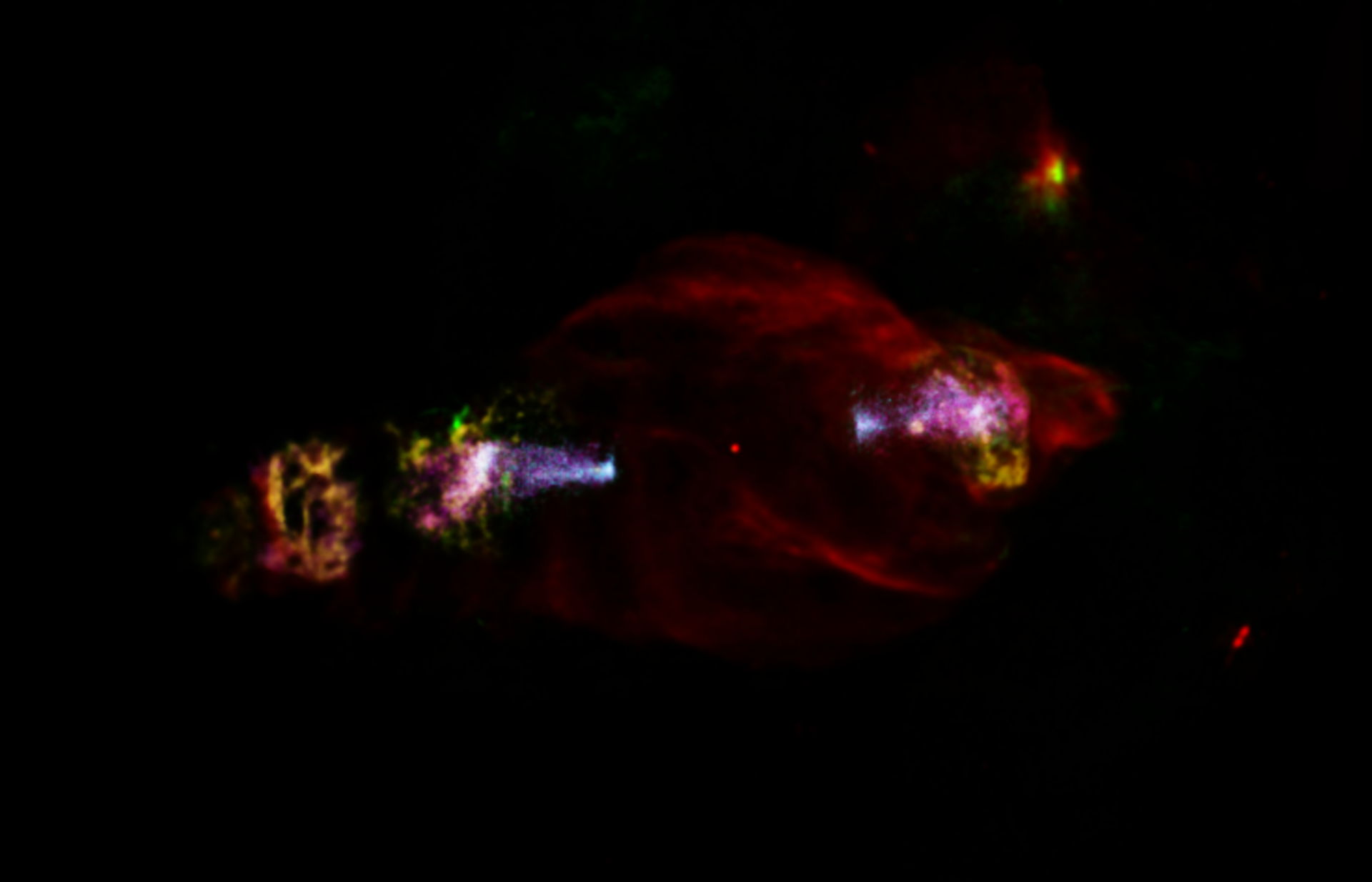
As we look out across the universe, we see all manner of objects forming, evolving, dying, and taking on new shapes and activities in their afterlife — or is it better to say undead years? I’m not sure where to take this analogy. All I know is stars die, leave behind nebulae with complex physics, and sometimes even compact objects that can be stellar vampires.
One star, in its death, expelled mass and shocked surrounding material in just the right way to form a nebula some folks see as a manatee. To one side is a yellow bulbous head, to the other is a massive red body and red tail, and if you use your imagination, it does look a bit like a modern art rendition of a manatee seen swimming from straight above. Cataloged as W50, this system was formed about 30,000 years ago and contains one of these tiny vampires – a probable stellar-mass black hole with a tiny accretion disk of material it is eating. That black hole is forming a tiny jet that is accelerating particles and releasing high-energy light.
According to Samar Safi-Harb, who led this study: Thanks to the new XMM-Newton data, supplemented with NuSTAR and Chandra data, we believe the particles are getting accelerated to very high energies in the head of the Manatee through an unusually energetic particle acceleration process.
Put another way, there is a space manatee with a head several 100 light-years across that contains a particle accelerator. I feel like there should be an Austin Powers joke in here somewhere, but carrying on with the science, this object can be readily seen in X-ray, gamma-ray, and normal light, and I expect future information and future “manatee with a particle accelerator on its head” headlines coming to journals near you.
More Information
ESA press release
“Hard X-ray emission from the eastern jet of SS 433 powering the W50 ‘Manatee’ nebula: Evidence for particle re-acceleration,” Samar Safi-Harb et al., accepted to The Astrophysical Journal (preprint)




 Join the Crew!
Join the Crew!
 Escape Velocity Space News
Escape Velocity Space News
0 Comments